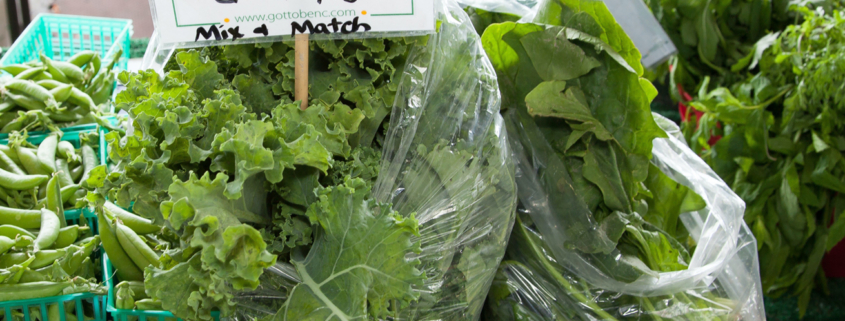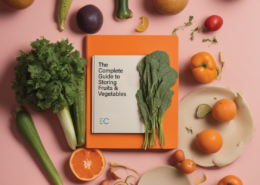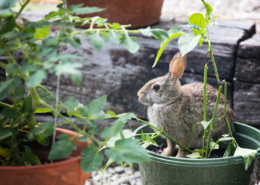The Best Way to Store Salad Greens to Make Them Last Longer
Has this happened to you? You open the refrigerator expecting to pull out the fresh, beautiful healthy salad greens you picked up at the market to get dinner on the table, only to reach in and discover a wilted, slimy mess.
That romaine, iceberg, or bag of pre-washed salad mix can’t be more than a week old, but there it is—and into the garbage, it goes. We hate when that happens—especially now as the cost of everything, including fresh produce, is soaring!
Here’s the Deal
There are ways to make salad greens last at least long enough to be consumed. But to be truly useful, whatever we have to do to make it happen needs to be practical—that means quick, easy, and reliable.
That’s why an experiment conducted at TheKitchn caught my eye and sent me running to a plastic food storage bin with a tight-fitting lid.
The Story
Christine Gallary, TheKitchn editor-at-large, was determined to end the mystery and myriad tips out there for storing salad greens by taking the three most popular methods and putting them to the test. The goal was to discover once and for all if the way we store fresh greens matters in the long run. She used a large bag of pre-washed mesclun for the test.
Method 1: Paper towel, plastic bag, no air
Lay washed greens on a paper towel, roll it up and place it inside a plastic bag, pressing out as much air as possible. Seal the bag and store it in the refrigerator crisper drawer.
Method 2: Paper towels, plastic container
Line a plastic food-storage container with paper towels, dump the greens on top of the towel, cover with another paper towel then apply a tight-fitting lid. Store the box in the refrigerator.
Method 3: Paper towel, plastic bag, yes air
Follow the same steps as Method 1, except instead of pressing out the air before sealing, blow a big puff of air into the bag to inflate it then quickly seal the bag. The idea here is that blowing into the bag introduces carbon dioxide, which supposedly helps to extend the greens’ useful life.
Here’s What Happened
After five days, Christine checked all three containers and was surprised to find very similar results. The greens in each one of the containers were still crisp, lovely, and totally edible.
After seven days, the salad greens in both of the plastic bags were beginning to show signs of wilt and some were even breaking down to the point of being inedible. But a quick pick-through would render plenty of fully-edible, lovely greens.
Turning Point
Ten days was the point at which things showed considerable differences between the storage methods.
The greens kept in plastic bags were deteriorating and becoming slimy. A lot of them were now inedible because of the excessive moisture buildup and cramped space, despite the paper towels..
But the rigid plastic storage container? The greens were still crisp, save for a few pieces that would need to be tossed out—but mostly still edible.
What Made the Difference?
The greens in the storage container were loose and never packed tightly, even from Day 1. The rigidity of the storage container protected the greens from being crushed or overly disturbed. The loose paper towels took care of the condensation.
What I like most about this is that I didn’t have to experiment! For years, I’ve enjoyed TheKitchn for all I’ve learned. Now I love it even more.
Having a plastic container designated for salad greens in my refrigerator makes so much sense. I can see inside without opening it to know what I have and how much is left. When I need lettuce or greens, it’s so easy to pop the lid, reach in, get what I need, replace it, and be done with it.
Ten-Day Window
Most of all, I am more confident now, knowing that generally, I have ten days to use up what’s in my salad bin. This Sterilite food storage bin has a tight-fitting lid, although any plastic container with a lid will work.
One of the most impressive things I find about the Sterilite products is they are made in the USA with manufacturing plants in Birmingham, Alabama, Lake Havasu City, Arizona, Massillon, Ohio, Clinton, South Carolina, Ennis, Texas; and Davenport, Iowa.
I can keep romaine, iceberg, or other types of greens that have or haven’t been pre-washed in this bin, making sure to replace the paper towel on top each time I pull something out. It’s easy and super convenient. I like this so much better than having to fuss with bags.
Other food items
Salad greens are not the only fresh food that tend to go bad before they can be fully consumed. Check out these tips and tricks to extend the life of other food items:
Cottage cheese
Any size container of cottage cheese, once opened, will last twice as long if you replace the lid then store the container upside down in the refrigerator. This creates a vacuum that pushes out some of the oxygen to create a seal. Works for sour cream, too.
Milk
Once you open that container of milk, drop in a pinch of salt then shake it up to mix well. This will not affect the taste at all but will extend the time before the milk begins to sour because salt is a bacteria inhibitor.
Cheese
Once opened and cut, wrap tightly in plastic wrap before returning to the refrigerator. Another tip: As far as possible, never touch the cheese! Always have a piece of plastic between your fingers and the cheese. You’ll see far less green mold.
Bananas
Wrap the crown (where they’re all attached) of a bunch of bananas with plastic wrap. They’ll keep for 3-5 days longer than usual—especially helpful if you eat organic bananas, which tend to ripen much more quickly.
Berries
Take berries (any kind) out of the plastic container they came in and line the container with a paper towel. Prepare a mixture of one part vinegar (white or apple cider) and ten parts water. Swirl the berries around in the mixture, rinse in a colander, and drain. Place berries back in the paper towel-lined container and store in the refrigerator.
Most berries, including raspberries, will last a week or more, and strawberries will go at least two weeks without getting moldy, soft, and ugly.
Celery, broccoli
Wrap celery (single rib or the entire stalk) or broccoli in aluminum foil before storing it in the refrigerator. It will remain crisp for four weeks or longer.
Updated 8-23-23
Everyday Cheapskate participates in the Amazon Services LLC Associates Program, an affiliate advertising program designed to provide a means for us to earn from qualifying purchases at no cost to you.
More from Everyday Cheapskate
Please keep your comments positive, encouraging, helpful, brief,
and on-topic in keeping with EC Commenting Guidelines
Last update on 2024-04-19 / Affiliate links / Images from Amazon Product Advertising API

















I already use the method of using paper towels and storage container with a tight fitting lid. But I also include mini peppers (leave caps on), broccoli and cauliflower using this method. Nice to already have them washed and prepped for eating raw or steaming.
I keep bananas in a plastic bag (sealed or twisted to keep air out) on the kitchen counter. They don’t ripen as quickly and are good for a week or more.
Wash lettuce in water with a quarter cup vinegar, pat dry, then store airtight in plastic bag or container. Much longer lasting!
If you are washing a large amount of leaf lettuce, use your washing machine to dry it- don’t laugh! Put the washed torn lettuce into a pillowcase, tie a loose knot, then put on spin cycle ( no water). Comes out perfectly dry and crisp!
That I have to try! I wouldn’t pay for a salad spinner (space, money, would I use it enough) but I have a handy spin cycke!
I have been married 60 years and have had 2 salad spinners in all those many years. Wouldn’t be without one. It is one of the most used items in my kitchen. Well worth the cost.
I find cheese lasts MUCH longer if wrapped in parchment paper then placed in plastic bag.
Instead of paper towel, I use terrycloth towels and when they get really wet, I replace them with dry ones and have kept romaine more than a month and it is crisp and fresh looking. I have been using plastic bags, but plan to try sealed containers. I have used terrycloth towels for lettuce, celery, bell peppers and most any vegetable or fruit.
Thank you Lynda! As someone who is striving for a waste-free lifestyle, that is preferable to using paper towels.
I try not to buy anything new, but this is a case where I’ll need some completely new and clean ones to use specifically for produce.
I appreciate the tip.
I have used a Tupperware Lettuce keeper for 30 years and it works wonderfully! Unfortunately, they no longer sell that item, but if you have one stuck away in your cupboard, put it to use!
I have that green lettuce keeper. I love it!
I have one like that too, it’s brilliant. And now that I know to use terrycloth towels instead of paper, I feel good about buying leafy greens again.
I wrap my green onions a paper towel and put in plastic bag. Also wrap my green pepper (if I have used part of it) in a paper towel then a ziplock bag. Will last a week or more without the cut edges getting slimy.
I cut the end of stalks of broccoli and heads of celery, then store them standing in jars of water in the fridge.
I find salad leaves last better in glass storage boxes (with plastic lids) than in plastic ones.
Don’t throw away those broccoli stems, they are delicious. Simply use a vegetable peeler to get rid of the tough outer layer.
I bought containers from Amazon
Rubbermaid FreshWorks Produce Saver Food Storage Containers, 2-Piece Set
Rubbermaid FreshWorks Produce Saver Food Storage Container, Medium, 6.3 Cup, Green
So they are great. Bought them when on sale. They have small vents that help keep food fresher.
Yes I love those too especially the large one for lettuce! I do put a paper towel in it on top of the lettuce.
I can get cheese to last for several months whether I touch it or not. Once I open it and use what I need, I place it in my NESCO food storage vacuum sealer and pull out all the air, then seal it. I usually leave the bag a little long so I can reuse the same bag for sealing it up after the next use. I love my NESCO and have used it for a couple of years with no problems. It has save me so much $$$$$.